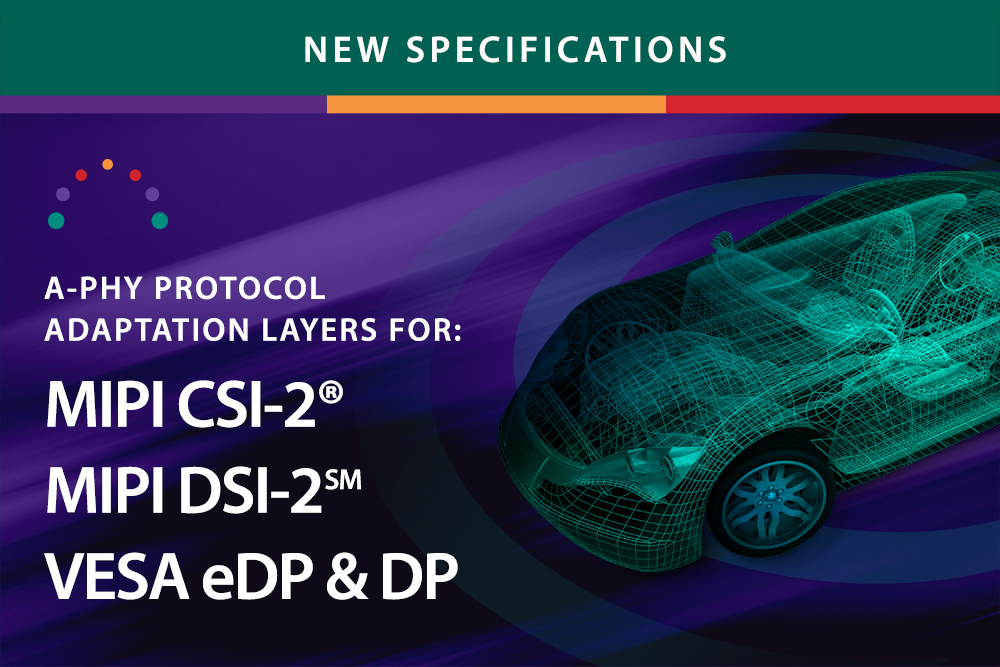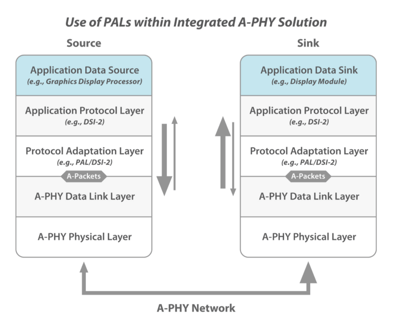2 min read
New Protocol Adaptation Layers Further Strengthen MIPI Automotive SerDes Solutions
![]() Ian Smith, MIPI Alliance Technical Content Consultant
:
27 April 2021
Ian Smith, MIPI Alliance Technical Content Consultant
:
27 April 2021

- News & Events
- News
- Blog
Update: MIPI A-PHY was adopted as an IEEE standard in June 2021 and is also available as IEEE 2977-2021.
MIPI Automotive SerDes Solutions (MASS), a standard framework providing end-to-end connectivity solutions for automotive sensors (camera/lidar/radar) and displays, has reached another important milestone with the release of three new standardized Protocol Adaptation Layers (PALs) for MIPI CSI-2®, MIPI DSI-2SM and Video Electronics Standards Association (VESA) Embedded DisplayPort/DisplayPort (eDP/DP).
The new specifications join existing PALs for I2C and GPIO to enable these widely adopted higher-layer sensor and display protocols to operate seamlessly over the MIPI A-PHYSM long-reach serializer-deserializer (SerDes) physical layer interface, which provides high reliability, excellent data rate and ultra-high immunity to EMI (electromagnetic interference). MIPI A-PHY is specifically designed to support the implementation of advanced driver assistance systems (ADAS), autonomous driving systems (ADS), in-vehicle infotainment (IVI) and other surround-sensor applications. In terms of topologies, MASS supports point-to-point connections, as well as daisy-chaining, and accommodates heterogeneous display types.
The new PAL specifications are:
- MIPI PALSM/CSI-2®, which defines the flows and mechanisms required for carrying MIPI CSI-2 traffic over a MIPI A-PHY automotive network, connecting a host processor with peripheral sensor devices, such as cameras, lidars and radar sensors that conform to MIPI CSI-2 specifications.
- MIPI PALSM/DSI-2SM, which defines the flows and mechanisms required for carrying MIPI DSI-2 traffic over a MIPI A-PHY automotive network, connecting a host processor with peripheral display devices that adhere to MIPI DSI-2 specifications.
- MIPI PALSM/eDP-DP, which defines the flows and mechanisms required for carrying VESA eDP/DP video, audio and control traffic over a MIPI A-PHY automotive network, connecting a host processor with peripheral display devices enabled with native VESA DisplayPort and/or eDP interfaces.

As shown in the figure above, the PALs map the higher-layer protocols to MIPI A-PHY's A-Packet format, acting as a conduit to and from A-PHY’s generic data link layer. By using a modular approach, the PALs help reduce cost of implementation, making additional approved protocols relatively easy to support and allowing components to be sourced from a much broader group of suppliers.
An additional A-PHY PAL to enable the control and configuration of peripheral devices via Ethernet protocol is currently in development, while a PAL for MIPI I3C® is targeted for future development.
Read more in the recent blog article, “MIPI Protocol Adaptation Layers (PALs) — A Conversation with Raj Kumar Nagpal,” in which the MIPI A-PHY Working Group chair explains how PALs support A-PHY, as well as their contribution to the broader system of MIPI automotive connectivity solutions.






